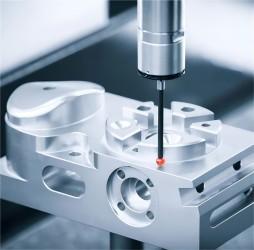The subtractive manufacturing technique of CNC machining involves using computer-controlled machines to remove material from a workpiece in order to mold it into the desired shape. Drilling, turning, and milling are the three most popular kinds of CNC machining. A spinning cutting tool removes material from the workpiece during the milling process. Turning is a technique for removing material from a workpiece by rotating it against a stationary cutting tool. A spinning cutting tool is used in the process of drilling to make holes in the workpiece. Stainless steel is a ductile material that may be CNC machined. A material's ductility refers to its capacity to withstand deformation without cracking. In addition to being a relatively strong material, stainless steel is able to withstand the forces used in CNC machining.
- Austenitic stainless steels: The most prevalent form of stainless steel is austenitic, and it is also the most machinable. They have a high level of corrosion resistance and are non-magnetic. Austenitic stainless steels include at least 6% nickel and 16% chromium. The face-centered cubic (FCC) crystal structure of austenitic stainless steels, which accounts for their lack of magnetic characteristics, is provided by the nickel content.
- Martensitic stainless steels: Magnetism, high strength, and hardness are all characteristics of martensitic stainless steels. Despite being harder to work with than austenitic stainless steels, they can nevertheless be toughened with heat treatment. Stainless steels that are martensitic include at least 0.1% carbon and 11.5% chromium. The body-centered cubic (BCC) crystal structure that gives martensitic stainless steels their magnetic characteristics is provided by the carbon content.
- Ferritic stainless steels: Ferritic stainless steels exhibit strong corrosion resistance and are magnetic. They cost less but are more expensive to process than austenitic stainless steel. Ferritic stainless steels include at least 0.1% carbon and 10.5% chromium. Ferritic stainless steels possess magnetic characteristics due to their body-centered cubic (BCC) crystal structure, which is provided by the chromium component.
- Duplex stainless steels: Austenitic and ferritic stainless steels are combined to form duplex stainless steels. They are the hardest type of stainless steel to mill yet have exceptional strength and corrosion resistance. Austenite and ferrite together make up about 50% of the composition of duplex stainless steels. Duplex stainless steel's excellent qualities are a result of its distinctive microstructure.
Strength, corrosion resistance, and machinability are just a few of the numerous qualities that differ across different varieties of stainless steel. It is crucial to pick a stainless steel type that is suitable for the purpose and that can be machined well. Incorrect stainless steel selection may make machining challenging or impossible, or the part may not fulfill your specifications. This may result in exorbitant delays and rework. High-quality parts can be made from a range of materials using CNC machining. However, it's crucial to pick a material that can be machined using CNC technology. Your parts can be machined to the highest standards by selecting the proper type of stainless steel.
